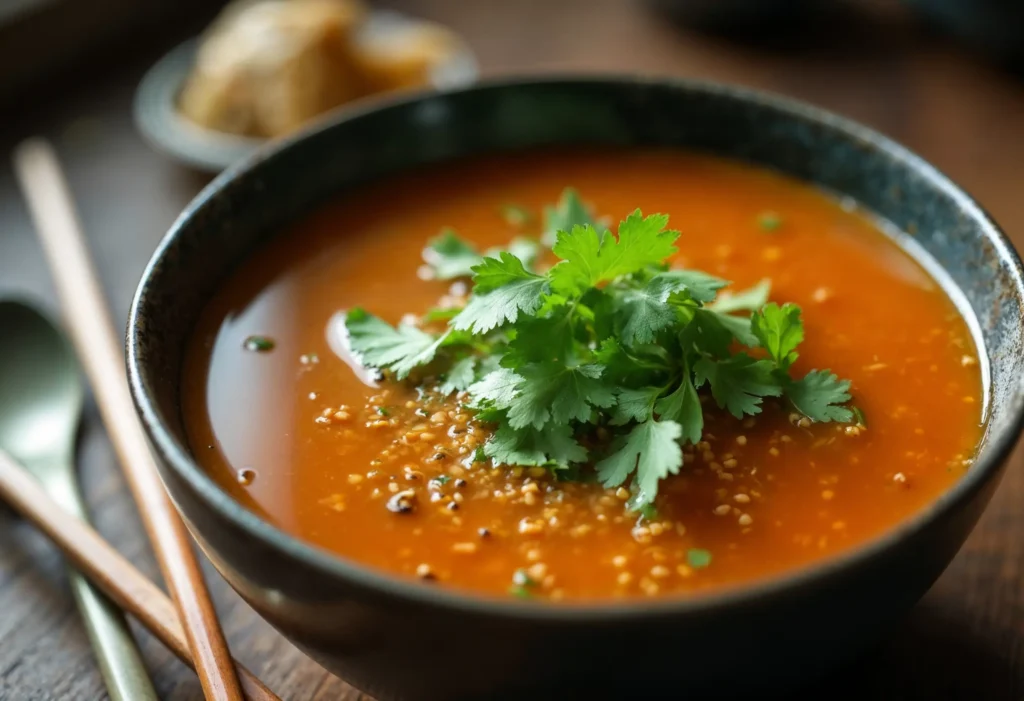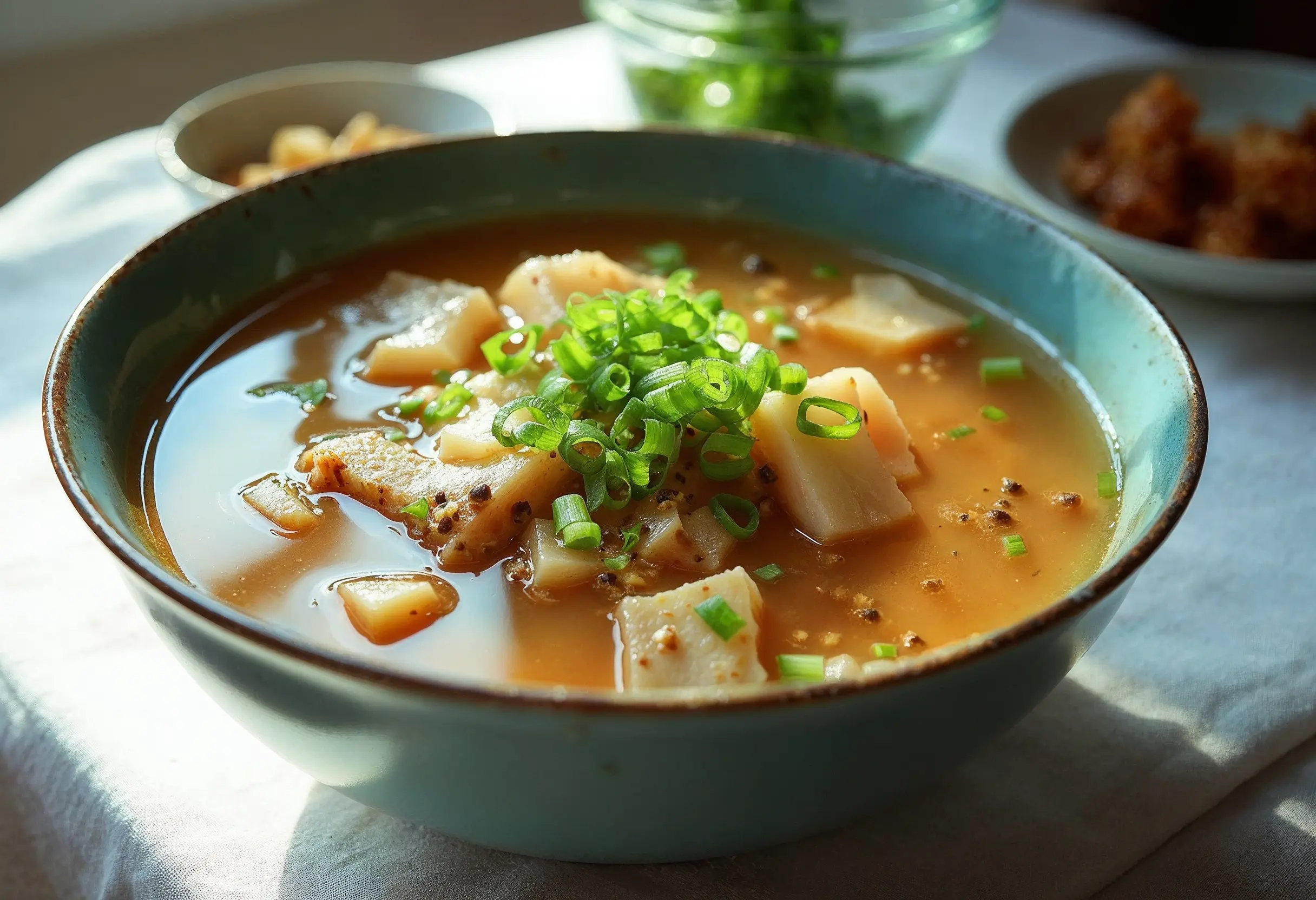Bone broth is more than just a food trend—it’s a centuries-old tradition used to nourish the body, soothe the soul, and support overall health. Packed with essential nutrients, bone broth benefits include everything from supporting gut health to promoting glowing skin. Whether you’re following a bone broth keto diet or just looking for a warm, comforting drink, this simple healing bone broth recipe will become a staple in your kitchen.
Let’s dive into how to make bone broth, its incredible health benefits, and how you can enjoy it as part of your daily routine.
Why Bone Broth? The Benefits You Need to Know
Bone broth is more than a tasty soup base; it’s a nutritional powerhouse. Here’s why you’ll want to make it a regular part of your diet:
Bone Broth Benefits
- Rich in Nutrients: Bone broth is packed with vitamins and minerals like calcium, magnesium, and phosphorus, which are vital for bone health.
- Boosts Collagen: Collagen from bones helps improve your skin’s elasticity and keeps your joints healthy. It also aids in reducing wrinkles and promoting healthy hair and nails.
- Supports Gut Health: Bone broth contains gelatin, which helps soothe the lining of the digestive tract, making it great for gut health and digestion.
- Immune-Boosting Properties: The amino acids in healing bone broth—like glutamine, glycine, and proline—support immune function and have anti-inflammatory effects.
- Aids in Weight Loss: Bone broth is low in calories but high in protein, which helps you feel fuller for longer.
What You’ll Need for a Basic Bone Broth Recipe
Before we dive into the process, let’s take a look at the ingredients you’ll need to make your own bone broth. The best part? You can make this with leftover bones from roasted chicken, beef, or turkey, reducing waste and creating a delicious, nutrient-rich broth.

Ingredients:
- 3-4 pounds of bones (beef, chicken, turkey, or a mix)
- 2 tablespoons apple cider vinegar (helps extract nutrients from the bones)
- 1 onion, roughly chopped
- 2-3 carrots, roughly chopped
- 2-3 celery stalks, roughly chopped
- 3-4 cloves garlic, smashed
- 1-2 bay leaves
- A handful of fresh herbs (parsley, thyme, rosemary)
- Salt and pepper to taste
- Water (enough to cover the bones)
Step-by-Step Guide to Making Bone Broth
Step 1: Roast the Bones (Optional but Recommended)
While not necessary, roasting the bones before simmering them gives your bone broth a richer flavor. Preheat your oven to 400°F (200°C) and spread the bones on a baking sheet. Roast them for about 30-40 minutes until they’re golden brown.
Step 2: Prepare the Pot
Place your roasted (or raw) bones in a large stockpot or slow cooker. Add the vinegar and enough water to cover the bones. Let this sit for about 30 minutes. The vinegar helps pull the minerals and nutrients from the bones.
Step 3: Add Vegetables and Seasoning
Toss in your vegetables (onion, carrots, celery), garlic, bay leaves, and herbs. Add salt and pepper to taste. Don’t worry too much about chopping the vegetables finely since they’ll be strained out later.
Step 4: Simmer
Bring the pot to a gentle boil, then reduce the heat to low and let it simmer. For chicken bones, simmer for at least 12 hours; for beef bones, aim for 24-48 hours. The longer you simmer, the more nutrients will be extracted.
Step 5: Skim the Foam
As the broth simmers, you’ll notice foam rising to the top. Skim this off every now and then to keep your broth clear and clean.
Step 6: Strain and Store
Once your broth has finished simmering, strain it through a fine mesh sieve or cheesecloth into a large container. Let it cool, then store it in the fridge or freezer.
Step 7: Use and Enjoy
You can enjoy your bone broth on its own, or use it as a base for soups, stews, sauces, or even in place of water when cooking grains like rice or quinoa.

Bone Broth Variations: Making It Your Own
While the basic recipe is delicious on its own, you can easily customize your bone broth recipe to suit your preferences or dietary needs.
Vegetable-Enhanced Bone Broth
Add extra vegetables like zucchini, mushrooms, or leeks for added flavor and nutrients.
Herb-Infused Bone Broth
Experiment with different herbs like basil, oregano, or cilantro. Fresh herbs give your broth a fragrant, flavorful boost.
Spicy Bone Broth
Want to add a kick? Add a pinch of cayenne pepper or fresh ginger for a spicy twist that also boosts the anti-inflammatory benefits.
Bone Broth for Keto
For those on a bone broth keto diet, you can add healthy fats like coconut oil or ghee to increase the fat content and make the broth more satisfying.
Bone Broth Protein: Why It’s a Powerhouse for Health
One of the key benefits of bone broth is its high protein content. A cup of bone broth can have up to 10 grams of protein, making it an excellent source for those looking to boost their daily intake.
Bone Broth Protein Benefits:
- Muscle Repair: Protein is essential for muscle repair, making bone broth protein a great post-workout drink.
- Supports Metabolism: Protein is crucial for maintaining a healthy metabolism, which helps you burn calories more efficiently.
- Satiates Hunger: High-protein foods like bone broth help you feel full and satisfied, which can support weight loss efforts.
If you’re looking for a natural source of protein that’s easy on the stomach and packed with health benefits, bone broth is an excellent choice.
Healing Bone Broth: The Anti-Inflammatory Powerhouse
Bone broth has long been considered a healing food, used to support recovery from illness, boost immunity, and reduce inflammation. The secret lies in its amino acids, which have potent anti-inflammatory properties.
Anti-Inflammatory Bone Broth Benefits:
- Gut Healing: The gelatin and collagen in bone broth help repair the gut lining, which can reduce inflammation and improve digestion.
- Joint Support: The collagen in bone broth helps support healthy joints and reduce joint pain, making it ideal for people with arthritis or athletes.
- Immune System Support: Bone broth is rich in nutrients that support the immune system, helping you fight off colds and infections more easily.
Bone Broth on a Keto Diet: What You Need to Know
If you’re following a ketogenic diet, bone broth is the perfect addition to your meal plan. It’s low in carbs, rich in healthy fats (if you add butter, ghee, or coconut oil), and packed with protein.
Bone Broth Keto Tips:
- Add Healthy Fats: To make your bone broth keto-friendly, add fats like ghee or coconut oil for an extra energy boost.
- Use It for Fasting: Many people on keto use bone broth during intermittent fasting because it’s filling without spiking insulin levels.
- Keto Electrolytes: Bone broth contains natural electrolytes like sodium and potassium, which help balance fluids and keep you hydrated on keto.
How to Store and Freeze Bone Broth
One of the best things about bone broth is that it’s easy to make in large batches and store for future use. Here’s how to store and freeze your broth:
In the Fridge:
- Store bone broth in airtight containers in the fridge for up to 5 days.
In the Freezer:
- Pour broth into freezer-safe containers or ice cube trays. This way, you can pop out a cube of broth whenever you need it. Bone broth will keep for up to 6 months in the freezer.
Creative Ways to Use Bone Broth in Your Cooking
Bone broth isn’t just for sipping—there are plenty of creative ways to incorporate it into your daily meals.
Use Bone Broth As a Base for Soups
Bone broth makes an excellent base for soups like chicken noodle, vegetable, or minestrone.
Swap for Water in Cooking
When cooking grains like rice, quinoa, or farro, use bone broth instead of water to infuse your dishes with extra flavor and nutrients.
Make Bone Broth Gravy
Use bone broth to make a rich and flavorful gravy for meats, mashed potatoes, or vegetables.
Frequently Asked Questions (FAQ)
1. Can I use any bones for bone broth?
Yes! You can use beef, chicken, turkey, pork, or even fish bones. The key is to use bones with plenty of connective tissue, as this is where the collagen comes from.
2. How long should I simmer bone broth?
For the best results, simmer chicken bones for at least 12 hours and beef bones for up to 48 hours. The longer you simmer, the more nutrients are extracted.
3. Can I make bone broth in a slow cooker?
Yes, a slow cooker is a great option for making bone broth. Simply add all your ingredients, cover with water, and set the slow cooker on low for 12-24 hours. It’s a hands-off method that yields delicious results.
4. How do I know when bone broth is done?
You’ll know your bone broth is ready when the bones have become brittle and break easily, and the broth has a deep, rich color. If using beef bones, the longer you simmer (up to 48 hours), the more collagen and nutrients you’ll extract.
5. Can I reuse the bones for multiple batches of broth?
Yes! You can reuse bones to make a second batch of broth, though the second batch will be less rich in flavor and nutrients. Be sure to discard the bones after the second use, as they will have given up most of their nutrients by then.

